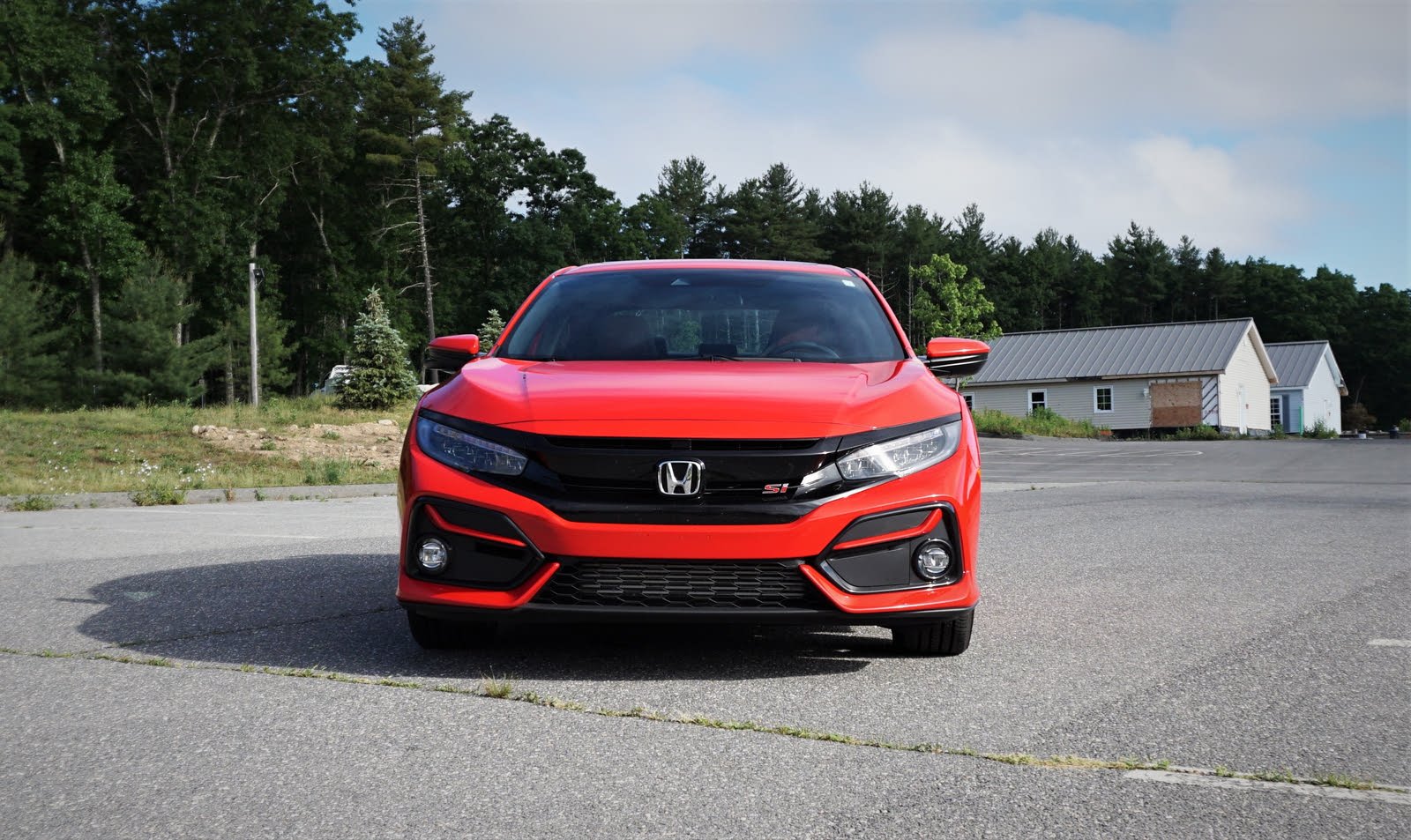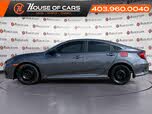2020 Honda Civic vs 2020 Toyota Camry
Overview | ||
MSRP | $24,425 | $20,000 |
Average price | $27,018 | $22,785 |
Listings | ||
Ratings & Reviews | ||
User reviews | ||
Expert reviews | 7.5 out of 10Read full review | 8.2 out of 10Read full review |
Pros & cons | Pros
| Pros
|
Summary | If you can't beat them, join them. That seems to be Toyota's philosophy in updating the eighth generation of the Camry for the 2020 model year. This latest version debuted in 2017 as a 2018 model. As buyers continue to defect from cars into SUVs like Toyota's own RAV4, Toyota hopes to entice more shoppers to stick with its midsize sedan by offering all-wheel drive on the Camry for the first time since 1991. What's new for 2020 is the Camry TRD option package on the XSE V6, with 301 horsepower that make the case to a buyer who might never have considered a Camry. | Minor design tweaks and more standard safety and convenience features arrive as the standout changes for the Civic's 2020 model year. Last redesigned for the 2016 model year, the Civic keeps outperforming its small-car peers by offering the performance and quality of more expensive cars, while retaining the value and longevity expected of a Honda. Plus, I had a really fun week with the turbocharged Civic Si. |
Video | No video found | No video found |
Popular Features & Specs | ||
Engine | 2.5L 203 hp I4 | 2.0L 158 hp I4 |
Drive Train | FWD | FWD |
Seating Capacity | 5 | 5 |
Horsepower | 158 hp @ 6500 rpm | |
MPG City | 29 | 25 |
MPG Highway | 41 | 36 |
Engine | ||
Engine Name | 2.5L 203 hp I4 | 2.0L 158 hp I4 |
Torque | 138 lb-ft @ 4200 rpm | |
Horsepower | 158 hp @ 6500 rpm | |
Drivetrain | FWD | FWD |
Fuel Economy | ||
MPG City | 29 | 25 |
MPG Highway | 41 | 36 |
Interior | ||
Seating Capacity | 5 | 5 |
Safety | ||
Front Crash Overall | 5 | 5 |
Side Crash Overall | 5 | 5 |
Dimensions & Capacity | ||
Cargo Space | 14.1 cu ft | 15.1 cu ft |
Curb Weight | 3241 lbs | 2771 lbs |
Height | 56.9 in | 55.7 in |
Length | 192.1 in | 182.7 in |
Width | 72.4 in | 70.8 in |
Wheelbase | 111.2 in | 106.3 in |
Maximum Payload | 925 lbs | 998 lbs |
Number of doors | 4 | 4 |
The 2020 Toyota Camry had a renewed focus on quality and appeal, aiming to reclaim its status as a top contender in the sedan market. Its styling was more expressive than ever, with a bold front fascia and taut lines that gave it a sporty edge. The design borrowed elements from BMW, such as a character line across the doors and an upturned kink of the C-pillar. With 13 exterior colour options, including a black roof, the Camry was designed to be fashionable. Inside, the Camry featured high-quality materials and a driver-focused dashboard, making even the base trims feel upscale. The top trims offered leather and wood finishes, aligning them with entry-level Lexus models. Despite not being a luxury or sport sedan, the Camry's starting price of $26,620 made it a compelling choice for those seeking a reliable and stylish vehicle.
The 2020 Honda Civic was a standout in Honda's lineup, offering a range of body styles—sedan, coupe, and hatchback—that highlighted its sharp design. The sedan featured a sleek roofline, while the hatchback had a quirky yet appealing rear. The Civic's exterior was visually stimulating, with body panel creases and wide LED taillights enhancing its low and wide stance. The 2019 updates to the grilles, bumpers, and wheels carried over to 2020, with the Civic Si models receiving additional enhancements like matte-black wheels and LED fog lights. Inside, the Civic boasted a simple yet high-quality interior, with soft-touch materials and gloss-black trim. The 2020 updates included new dash accents and revised sport seats for the Si, adding to the Civic's appeal as a well-engineered and stylish compact car.
The 2020 Toyota Camry offered a range of powertrains, including a 2.5-litre four-cylinder engine with 203 horsepower (206 in XSE trim) and a 3.5-litre V6 producing 301 horsepower. The V6, paired with an eight-speed automatic transmission, provided a smooth and powerful driving experience, particularly in the Camry XLE. The four-cylinder engine, while less powerful, offered a lighter front end and improved steering feel, especially in the sporty XSE trim. The Camry also introduced an all-wheel-drive option, which could send up to half of the engine's torque to the rear wheels in slippery conditions. Fuel efficiency varied, with the front-drive Camry achieving 7.6 L/100 km in XLE and XSE trims, while AWD models consumed 8.4 L/100 km.
The 2020 Honda Civic featured four engines and two transmissions, all front-wheel drive. The base engine was a 2.0-litre inline four-cylinder with 158 horsepower, while the 1.5-litre turbocharged engine offered 174 horsepower and 162 lb-ft of torque. The Civic Si and Type R models provided more power, with the Si's engine producing 205 horsepower and the Type R delivering 306 horsepower. The Civic's powertrains were praised for their smoothness and responsiveness, with the CVT offering seamless acceleration. The Si and Type R models came with a manual transmission, enhancing the driving experience. Fuel efficiency was commendable, with most Civic models achieving around 8.0 L/100 km in the city and as low as 6.0 L/100 km on the highway.
The 2020 Toyota Camry was designed for ease of use, with controls that were intuitive and within easy reach. The front seats offered increased legroom and hip room compared to previous generations, while the rear seat had slightly reduced legroom and passenger volume. The trunk provided 428 litres of cargo space, comparable to the Honda Civic. The addition of all-wheel drive did not compromise the Camry's interior space, as Toyota made structural modifications to maintain the rear seats and trunk size.
The 2020 Honda Civic offered a spacious interior, with the hatchback providing the most cargo space at 728 litres behind the rear seats and 1,302 litres with them folded down. The sedan's trunk held 416 litres, while the coupe offered 343 litres. The Civic's interior featured a conventional PRNDL shifter and a configurable centre console with deep storage bins and removable cupholders. Rear passengers enjoyed ample space, although the lack of rear air vents was a notable oversight. The Civic's interior updates included improved sound insulation and an eight-way power-adjustable driver's seat on EX hatchback models.
The 2020 Toyota Camry came equipped with Apple CarPlay and Android Auto, allowing drivers to bypass the standard infotainment system, which felt dated. The touchscreen was functional and responsive, with hard buttons for major functions. The standard 7-inch screen could be upgraded to an 8-inch version, and higher trims offered a 10-inch head-up display. The Camry also featured a one-year trial of Remote Connect, enabling smartphone-based remote access to the vehicle.
The 2020 Honda Civic's infotainment system was considered outdated, but it included Apple CarPlay and Android Auto on all models except the base DX sedan. The Civic Si introduced Active Sound Control, which could be turned off in favour of personal music preferences. The Civic also featured LaneWatch, a camera-based blind-spot monitoring system, and Honda Sensing, which included adaptive cruise control and lane-keeping assist. Higher trims offered additional features like leather upholstery, rain-sensing wipers, and LED headlights.
The 2020 Toyota Camry included Toyota Safety Sense, featuring emergency braking, adaptive cruise control, lane-departure warning, and automatic high beams. Blind-spot monitoring was optional, and higher trims offered Bird's Eye View for enhanced parking assistance. The Camry received a five-star rating from the NHTSA and a Top Safety Pick+ from the IIHS. However, a recall for leaking engine coolant affected some models.
The 2020 Honda Civic came with Honda Sensing, which included forward collision warning, emergency braking, and adaptive cruise control. The Civic earned a Top Safety Pick rating from the IIHS, with "Good" ratings in all crash tests. The NHTSA awarded the Civic five stars in most categories, except for a four-star rating in the passenger frontal crash test for the coupe.
CarGurus highlights

According to CarGurus experts, the overall rating for the 2020 Toyota Camry was 7.5 out of 10, while the 2020 Honda Civic scored 8.2 out of 10. Based on these ratings, the Honda Civic emerged as the preferred choice, offering a more engaging driving experience, better technology integration, and superior safety features.
Choose the 2020 Honda Civic if:
Shop Now- You seek a compact car with a variety of body styles and a visually stimulating design.
- You value a responsive and efficient turbocharged engine with manual transmission options.
- You need a spacious interior with flexible cargo space, especially in the hatchback model.
Choose the 2020 Toyota Camry if:
Shop Now- You prioritize a smooth and powerful V6 engine with luxury aspirations.
- You want a sedan with all-wheel-drive capability for better traction in slippery conditions.
- You appreciate a stylish design with high-quality interior materials.

By: CarGurus + AI
At CarGurus, our team of experienced automotive writers remain at the heart of our content operation, conducting hands-on car tests and writing insightful guides that are backed by years of industry experience. To complement this, we are harnessing AI to make our content offering more diverse and more helpful to shoppers than ever. To achieve this, our AI systems are based exclusively on CarGurus content, ratings and data, so that what we produce is both unique to CarGurus, and uniquely helpful to car shoppers.































